Last week, one of my followers on Instagram asked me what order to apply her toner, moisturizer, and sunscreen. Does the sunscreen go before or after moisturizer? It’s a great question.
I’ve talked about layering skin care products but haven’t explained the rationale or sequencing of different products. So that’s today’s topic.
Here are two approaches. The first one is the simple approach. The second method is the technical one.
APPROACH #1 – Lightest to Thickest Texture
The simplest approach is to go from lightest to heaviest texture – in other words, the lowest to highest viscosity. Viscosity is how thick something is.
Apply the lightest product first – the one with the loosest or runniest texture (most fluid). And the thickest product last (most solid).
The looser the texture, the more water there is in the product. The more solid it is, the less water there is.
This lightest to heaviest approach is not precise but good enough.
APPROACH #2: Water-Based Products Go FIRST, Oil-Based Products Go LAST
What goes onto skin right after cleansing? It should be a water-based product.
Water-based means there is more water than oil in the product (called an oil-in-water emulsion). The texture is more fluid.
Oil-based means there is more oil than water in the mixture (called a water-in-oil emulsion). The texture is generally more thick, solid, or oily.
An oil-based product should go on LAST, to seal in moisture.
To understand why better, you need to understand the structure of skin. I’ll briefly explain here, and you can read more about it in the Further Reading links at the end of this post.
The outer layer of skin is the Stratum Corneum, a dead layer of skin cells. This layer consists of 3 main components:
- Lipids (fatty substances)
- Corneocytes (dead skin cells), and
- Natural Moisturizing Factors (the skin’s natural humectants).
The lipids prevent the passage of water out of the skin by trapping the water molecules. (This is known as transepidermal water loss.) The lipids also prevent the Natural Moisturizing Factors from leaching out.
So, when you apply an oil-based product, which contains a high amount of lipids, you increase the skin’s ability to prevent water loss. The lipids partially occlude (provide a temporary film over) the surface of skin. This is why an oil-based product goes on LAST. You need to get your water-based products, such as toners and serums, into skin before you ‘seal’ skin.
If you apply a water-based product on top of oil, its penetration will be limited. (Oil and water don’t mix.)
What is Water-Based?
All toners, mists, essences, most serums (except oils that are called serums), and most oil-free moisturizers.
What is Oil-Based?
Of course oils. And many creams (the ones that are not oil-free). Oil-free moisturizers, which are usually in a fluid, lotion, or gel, are water-based. Balms are oil-based.
Silicone-Based Products
Not to make things even more complicated (isn’t skincare complex?), but there is another dimension – silicone-based products. So let me digress for a few minutes.
Silicone is a term that applies to a group of ingredients. “Silicone” is not an actual ingredient. It is to easy to confuse this word with “silicon” (without the “e” at the end), which is an element in the periodic table. Examples of elements are: Hydrogen, Carbon, Oxygen, Sodium, Potassium, Calcium, etc.
Silicone ingredients have names ending in “cone” or “siloxane.” For example: Dimethicone, Cyclopentasiloxane.
Silicones are used in many products to provide a nice slip to products. The slip refers to how a product applies and feels on skin. Silicones make a product spread more evenly, smoothly, and easily on skin. The product also feels silkier. Serums and creams with silicones provide a texture that many consumers find appealing. Makeup primers are made with silicones to create a smooth film over skin and “fill in the cracks’ (e.g. fine lines or uneven texture). The result is a satiny finish on skin that makes foundation application more flawless.
Silicones are also used in sensitive skin and barrier repair products. Most silicones block water molecules, preventing the passage of water going into and out of skin. This minimizes water loss and prevents the skin from getting dried out, a huge help when the skin barrier is damaged. A damaged barrier is more permeable to microbes or irritants, and more water evaporating out of skin. Silicones shield the barrier while still allowing air vapors (e.g. oxygen, nitrogen) to penetrate.
Some barrier repair creams and sensitive skincare products are made with a lot of silicones because they provide relief to chafed or irritated skin. The texture of this kind of product may feel like a dry, thick paste or ointment (a makeup primer texture is one example). This kind of of cream should be applied to skin last. Because a cream containing a high amount of silicones blocks water, a water-based product does not penetrate as well if there is already a thick silicone layer like this on top of skin.
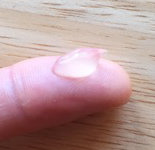 In the photo to the right is Dermalogica’s Barrier Repair, a silicone-based gel. This product has no water (it’s called an anhydrous product). Instead, the first four ingredients are silicone ingredients. It may not be clear from the photo, but it feels like an ointment. In the photo, it looks like a gel, but it’s thicker and drier than your average gel. This is the kind of silicone-based product that is best applied last.
In the photo to the right is Dermalogica’s Barrier Repair, a silicone-based gel. This product has no water (it’s called an anhydrous product). Instead, the first four ingredients are silicone ingredients. It may not be clear from the photo, but it feels like an ointment. In the photo, it looks like a gel, but it’s thicker and drier than your average gel. This is the kind of silicone-based product that is best applied last.
Sunscreens Should Always Go Last (But Before Makeup)
One final note – sunscreens (physical or chemical, but especially physical) should go on last in your skincare routine. But before you apply makeup (e.g. foundation or primer).
Sunscreen is your skin’s FIRST defense against free radicals. It should deflect, scatter, or absorb UV rays to neutralize free radicals as soon as possible.
This is crucial because free radicals create a chain reaction that generates more free radicals.
Foundation or BB cream should go on last simply because it will look much better (more smooth and fresh). Applying sunscreen over foundation would ruin the finish of the foundation.
If you have a mineral sunscreen powder (e.g. powder you apply with a brush), put this on last. Powder should always goes on last.
The Order of Skin Care Products in a Routine
While you might see variations, this is the order in which I prefer to apply skin care products. Time suggestions will also vary depending on the product.
For fluids, wait 10-20 seconds before applying the next layer. This will give skin time to fully absorb it.
For creams, wait 1-2 minutes before applying the next layer.
AM Routine
1. Cleanse
2. Tone
- This should be a hydrating toner (something with humectants that will hold in water). Not an astringent.
3. Optional – Spot Treatment Product
- This step is for an acne spot treatment or lightening spot treatment for small, select areas of the face.
4. Serum(s) and Essence(s)
- This may be one or more serums, depending on what conditions you’re treating and what brands you’re using.
- If my routine has more than one serum and they are all about the same viscosity, I like to apply the serum that treats my most important concern first. For example, if my most urgent concern is lightening, I’ll apply the brightening serum first.
- Or I apply the serum with the ‘best’ ingredients first. For example, the one with the most age-fighting ingredients or the most expensive ingredients.
5. Eye Cream
- I like to apply eye cream before moisturizer in order to allow the eye cream to reach the skin first. If you apply moisturizer first, it is easy for moisturizer to end up under the eyes. There’s nothing wrong with that, but if you’ve invested into a good eye cream, applying that over the accidentally deposited moisturizer makes the eye cream less effective. It now has one more layer to pass through.
6. Moisturizer
7. Sunscreen (or BB Cream)
- This step is optional if you use a moisturizer with sun protection in Step 6.
- I recommend a separate sunscreen however, since most moisturizers don’t contain much sun protection. SPF moisturizers are inadequate for a full day of protection.
8. Makeup
- If you’re wearing sunscreen (not BB cream), then apply your foundation after the sunscreen. Give the sunscreen at least a minute to absorb and dry.
PM Routine
1. Cleanse
2. Optional – Exfoliate
- On the nights you exfoliate, this is when you do it – right after cleansing.
3. Optional – Mask
- On the nights you mask, this is when you do it – right after exfoliating (or cleansing if you’re not exfoliating).
4. Tone
5. Optional – Spot Treatment Product(s)
6. Serum(s) and Essence(s)
7. Eye Cream
- Re-apply eye cream if your eyes get dry before you go to bed. I do this if I cleanse my face more than a few hours before bed.
8. Moisturizer and/or Oil
- If you’re using both a moisturizer and oil, the ideal order will really depend on your products (their ingredients and viscosity). There are multiple routes of entry for ingredients to travel into skin, so a single answer that satisfies all product combinations isn’t possible, unfortunately. You can put the oil before the moisturizer, or the oil after the moisturizer – whichever way you find works better in terms of how well they absorb. If the moisturizer is oil-free, put it on before the oil. If the moisturizer is highly occlusive, put the oil on before the moisturizer.
- Press the oil in (instead of spreading it over skin). The oil will absorb better, and if you put moisturizer over it, the moisturizer will absorb better too. Plus, it avoids the potential issue of pilling (when a product balls up and leaves flakes on skin). And it prevents you from applying too much oil. It’s easy to over-apply oil and find yourself with pimples the next day.
9. Optional – Extra Moisturizer or Sleeping Mask
Why Layer?
Layering means to apply different products onto skin, rather than just one product.
When do you layer?
- YOU NEED MORE MOISTURE – Your skin is dry, and one moisturizer isn’t enough. It’s hard to satisfy very dry skin with just one moisturizer. So if you need more moisture, by all means, add another layer of serum or moisturizer. But wait a few minutes for the first layer to absorb before you apply another layer. Or return an hour or two later and apply more moisturizer.
- YOU WANT MORE PERFORMANCE INGREDIENTS – You’re interested in maximum age-fighting and want to get multiple performance ingredients into your skin, But you don’t have a serum that does everything you want. You might have one serum that does X and Y. And then another serum that does Z. It’s rare to find a serum that does everything your skin needs effectively.
Not everyone needs to layer. For instance, if you have sensitive, acne-prone, or oily skin, you’re better off with fewer products on your skin. Less is better in these cases.
The Challenges of Layering & Precautions
Layering skin care products can be tricky though. There are some challenges, but as long as you’re aware of them, that should not stop you from trying it.
- TIME – It takes more time. You have to wait for a layer to absorb before applying the next layer. If you’re in a rush in the morning, this may not be practical. But you can save layering for your night time routine.
- INCOMPATIBILITY – Sometimes a product may be incompatible with another product.
- Some ingredients should not be combined. For example Benzoyl Peroxide should not be used at the same time with ingredients that are easily oxidized (antioxidants, tretinoin and most other retinoids, some lightening agents). Benzoyl Peroxide is a strong oxidizing agent. So using it with something that is easily oxidized cancels its effectiveness.
- Two chemically incompatible products may produce pilling (product that balls up and leaves flakes on skin).
- The products may have a different pH. Say one is acidic, the other is alkaline. In theory, the pH of skin care products should be close to skin’s pH (unless it’s an AHA exfoliant, in which case the pH must be acidic in order for it to work). A product may not work if it’s being combined with a product whose pH changes its ideal pH.
- Products in a line are designed to work in synergy with other products in that line. Sometimes, a treatment product is meant to be used with another product for maximum results. Combining treatments from different brands may be less effective if the ingredients are working in opposition to each other.
- TOO ACTIVE ON SKIN – If you’re using two highly active serums, it could be too stimulating for skin or worse, irritating or damaging to the skin barrier. For example, two serums that both have a high concentration of an exfoliating ingredient (e.g. AHA), retinol, or Vitamin C. Retinol with certain AHA’s, like glycolic acid (which is already irritating by itself), is aggressive on skin and can be too drying or irritating. Or, you may simply have skin that cannot tolerate too many performance ingredients.
Tips for Layering
When you layer multiple products, you put a greater ‘load’ of product on skin. This can be too rich for skin. The way to layer effectively is to apply less of each product.
One way to do this is to apply a small amount of product (assuming it’s a fluid) to your palm first, lightly rub both palms together to spread the product up to the fingertips, then press your palms onto your face. For the eye area which has deeper contours, you can press your fingertips into skin. (It’s hard to reach inside the eye socket with your palms.)
The key point is to press, not rub. When you press, you use less product. When you place product directly onto skin and rub, you end up using more product. This pressing method prevents you from overloading skin and saves product. It is a common application technique in Asia, especially in Korean and Japanese skincare, which typically consists of many steps (layers).
If you have skin that doesn’t break out or get irritated easily, you don’t need to use this pressing method. Personally, I rarely use this method on myself because it’s time consuming and I don’t have the patience for it.
What I do is pump out product onto a few fingers (just the tips of the fingers, not the palms), rub that together with the same fingers on my other hand, and quickly spread both hands (it’s really just the fingers, not the palms) over my face.
The trick to this method is using a hydrating toner beforehand. The toner drenches skin and makes products slide easily across it. If I didn’t use a hydrating toner beforehand, the product would dry up quickly on skin, and then I would be forced to pump out more product to cover my whole face.
Parting Thoughts
Layering products is tricky because there are so many variations of skincare products today. And there is a growing trend of products becoming more multi-functional. They’re doing more than just one thing. And so they may have ingredients that you would ordinarily not find in that product.
With products crossing the lines between treatment and other functions, such as cleansing or moisturizing, it becomes more difficult to figure out how many products is appropriate for your skin and what order to put them in.
What makes it even more complicated is mixing brands. We all do this. I do it (and in the professional esthetics industry, my practice of using multiple brands may be considered unorthodox). But there is absolutely nothing wrong with it. It’s hard to have a routine constructed entirely of one single brand’s products. Some brands are small and don’t offer everything we need. Of course, a brand will want you to use its whole line. But the reality is, it is unrealistic for a brand to excel in every product category and meet all of your individual needs.
And plus we’re only human. Most of us like and want variety, or we get bored. And then, as I always like to say, skin is in a perpetual state of change. Just the seasons and natural process of aging change our skin states and requires us to modify our routines, and therefore our products.
Because there is so much complexity in layering, each routine must be evaluated on a case by case basis. But I hope that this article gives you some insight and guidance.
The best thing to do is try it out and see what happens. But do it carefully. Always make small, incremental changes. Change one thing at a time and then see what happens.
Want articles delivered straight to your inbox? Sign up here.
Follow me on Instagram, Facebook, or Twitter.
Further Reading:
- Skin Barrier Function
- Layers of Skin
- Lipids in Skin Care
- Glycosaminoglycans/Humectants
- All About Face Oils

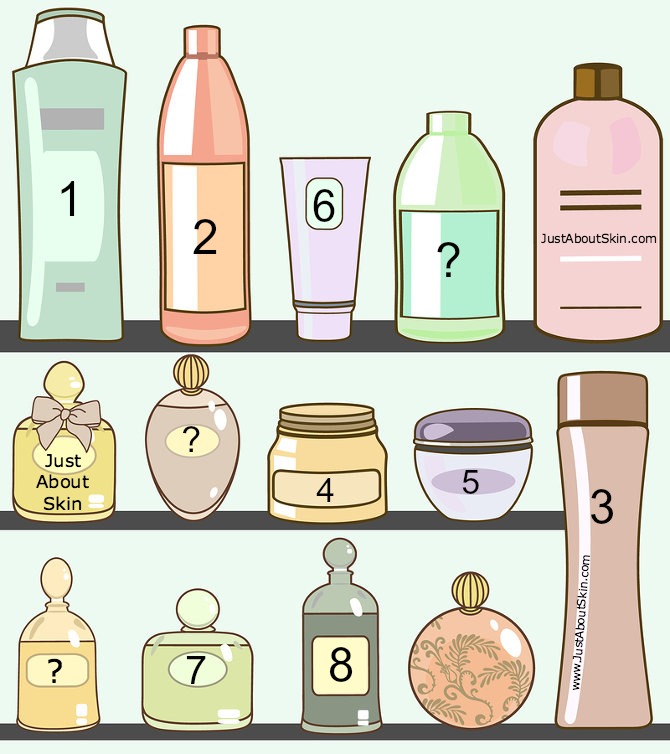
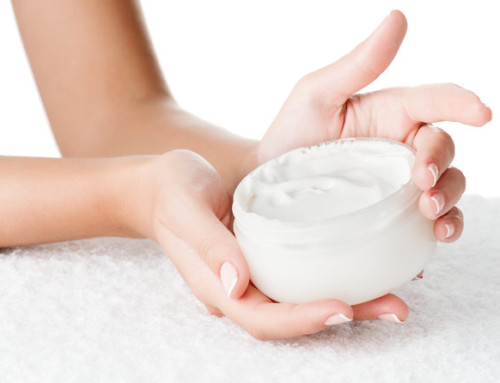

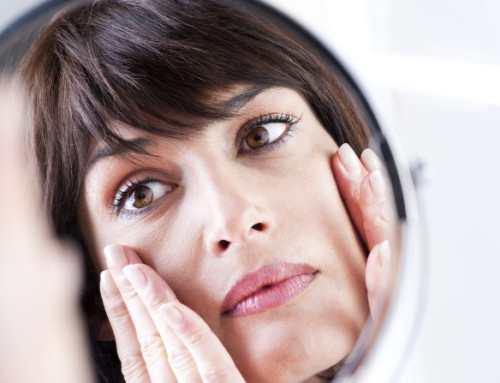

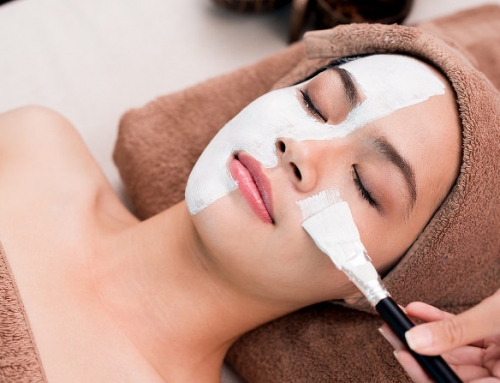

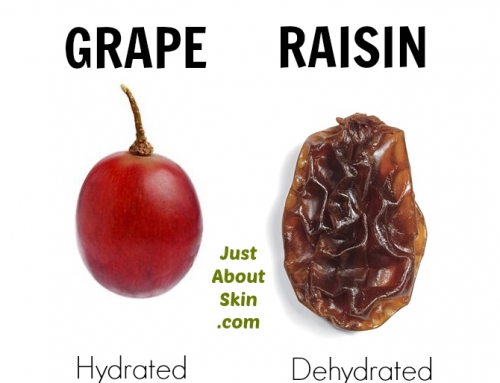


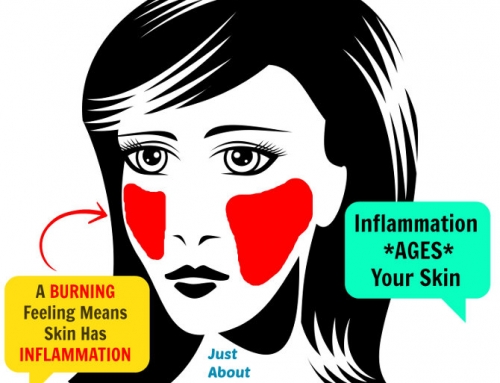
hiii ..
i would like to ask if am using an oil does it comes as a last step after moisterizing??
am using LPR dueo its a face treatment i use on my whole face to minimize pimples apperance do i put it after my serum or after??
i would like to thank you for the great blog and effort..
Hi, thank you for your kinds words! I would apply the La Roche Posay Effaclar Duo first, right after you cleanse. This is a treatment, and it’s best to apply treatments that solve your most important problem before anything else. If you’re using an oil, yes apply that last, after moisturizing.
Hi,
That’s a very nice article. I am going to bookmark this coz I know I’ll keep using it for reference. I came across it while looking for specific info on layering vitamin C serum and facial oil. However I feel that I am doing something wrong in my method. What is the right way to do it?
Here is my routine in the evening when I use Vit. C and facial oil:
1. Cleansing (Clarins Anti-pollution)
2. Mineral water spray (Vichy)
3. Toner (Herbal Energy lotion)
4. Instanaturals Vitamin C serum
5. Clarins blue orchid facial oil.
I wait for a few minutes before applying the oil.
However as soon as I apply the oil, I can feel that my face is a bit sticky and as I apply the oil and get to the outer edges of my face while doing the upward pressing motions/applying motions, I can feel product rubbing off of my face and on to my hands. It feels like very smooth grit in my hands…
I cannot understand what I am doing wrong!!… It is really frustrating.
Please do share your thoughts. Would appreciate help 🙂
Thanks!
Hello,
I can understand your frustration with the layering. Sometimes, products from two different brands are incompatible with each other. That is one challenge of layering.
If product is rubbing off your face you’re applying the oil, it means the oil is not absorbing into skin or you are applying too much oil. The feeling of a smooth grit sounds like the oil isn’t compatible with the serum or toner.
Have you tried applying that oil onto clean skin without anything else beforehand? Try that to see if there is an issue with the oil. If you have the same issue of oil rubbing off, that means the issue is with too much oil (you can modify your application) or poor absorption (this oil is not right for your skin).
Next, try applying the oil over something other than the Vitamin C serum. For example, try applying it over the toner. What happens? Then apply it over a toner + a different serum (if you have one). The goal is to figure out if the Instanaturals + Clarins are causing the grit.
I hope this helps you identify the cause of the problem! Thanks for reading the blog 🙂
Hi Rita,
Thank you so much for the detailed article. I just always feel that layering my skin is way difficult because it likes mixing products together. Thanks for the instruction!
Im wordering that can I use vitamin C serum (The OST 21.5%) together with my Laroche Posay Effaclar Duo (+). Can their ingredients be used together?
Please share your thoughts with me! Much appreciated!
Thank you so much in advance!
Wendy
Hello Wendy,
Thank you! I understand, it isn’t always easy using different products at the same time.
I would not use the OST C serum with Effaclar. The benzoyl peroxide in Effaclar may oxidize the ascorbic acid in the C serum, reducing its antioxidant effectiveness. Also, oxidized ingredients, such as oxidized Vitamin C, are comedogenic. The two treatments together may be too active on your skin too.
How about using the C serum in the morning, and the Effaclar at night?
Thank you for the great article. I just purchased smashbox blemish control primer. I also use clinique dark spot corrector and olay regenerist serum. I was planing to use the primer right after i wash my face to get the saliycilic acid benefits. Now that I read the article I am worried that the silicone in the primer would diminish the benefits of the serums. What would you advise? Thanks.
Hi, thank you. That’s a good question. I would apply the Clinique and Olay serums first, and put the primer on last. Your skin will absorb those serums better if they go on first. You’ll still get some of the benefits of the Salicylic Acid in the primer. Primer is best as the last step (or the next to last step if you are wearing foundation).
The Salicylic Acid is a useful ‘add-on’ ingredient in the primer. Like an extra bonus in the primer (but the primer is still the main function of the product, not treating blemishes). If your main concern is to treat breakouts or clogged pores, it would be better to use a Salicylic Acid serum or spot treatment product. It would put more of it into your skin.
Hi Rita
What a wealth of information on a super website. I’ve bookmarked for reference.
My question is that will applying a face oil before a 2.5% a Retinol moisturiser stop the Retinol from penetrating the skin
Regards
Robina
Thank you Robina! The oil won’t stop it, but penetration will be better if you apply the retinol moisturizer first.
Thank you Rita
Xx
Wow, I’m glad I came across this article! So informative! Thanks for sharing this!
Hi should an oil be applied after moisturizer or before? I use two different serums (so after the serums?) Thanks!
Hi Michelle, you can apply it before or after. It depends on the moisturizer. But the easiest rule to remember is to apply it AFTER MOISTURIZER. And when you apply the oil, press it into skin. Pressing rather than rubbing it over skin prevents pilling.
But if you find that applying oil before moisturizer works better for you, that’s fine too!
I make my decision based on the texture of the moisturizer, whether it’s oil-free or not, and how long I am willing to wait in between the steps. For example (and this is assuming it’s night-time):
1). If my moisturizer is a light cream or lotion that absorbs quickly and leaves no film, I apply the oil afterward (using the finger pressing method).
2). If my moisturizer is a thick, sticky, or rich, emollient cream, I prefer to apply the oil before (by pressing) and wait at least a few minutes for it to fully absorb into skin. Then I apply the moisturizer. This is because I personally prefer the feeling of a cream on my face when I am sleeping.
Sometimes, I might even come back an hour after the oil to apply the moisturizer. By then, the oil has had plenty of time to sink in, and my skin is ready for and can hold more moisturizer.
3.) If my moisturizer is oil-free, I apply the oil after the moisturizer.
Hi
Thank for the valuable info! I know that you are supposed to go from thinnest to thickest ,but a couple of time a week I use Paulas Choice Clinical retinol in where the second ingredient is silicone after water and then glycerine as the third.. I usually apply this before my face oil (rosehip/jojoba) . Sometimes I wait one hour but now I am worried that I might done it wrong. Should I mix the retinol with the oils or apply it after the oils?
Hi Ashi, thank you for writing! It’s ok to apply the Paula’s Choice retinol serum before your face oil. In fact, that’s the best way, and you should continue doing that. Since the first ingredient is water, you don’t need to worry. This is a water-based serum, and it’s not occlusive. The silicone ingredient is there to provide a nice slip to the product.
A bit late but thank you for answering me 🙂 i guess the same would apply to CeraVe lotion pm ( lots of niacinamide 🙂 )
This site/blog is the best btw! Thank you!
hi thank you for the info! this is really helpful. I always use eye cream as the last, so maybe that’s why all type of eye cream I have used never really worked out :D. I have a question, so are the essence and serum same? I use Sk-II facial treatment essence & Estee Lauder Advanced Night Repair Serum. which one of them do you think I should use first? Thankyou.
Hi, thank you, glad to hear it is! An essence and serum are similar – they both perform some kind of treatment function. But essences are typically lighter in texture than serums – looser and more fluid. I would apply the Sk-II essence first, and then the Estee Lauder serum.
Hi Rita! Thank you so much for your blog!! It is so informative and help. I have 2 questions I hope you don’t mind asking. 1. How would you layer serums that have acids in them? I have been using the Sunday Riley Good Genes and Ole Hendrisken Vitamin C but can’t decide whether to use the Good Genes first to penetrate my skin better or follow the number 1 approach. 2. Is it ok to layer multi-purpose serums? I’ve been using the Estee Lauder serum. Thank you.
Thank you Judy! I would apply the exfoliating serum first, before the non-exfoliating ones. In your case, Good Genes before Ole Vit C.
It’s ok to layer multi-purpose serums as long as the combination doesn’t irritate your skin and the ingredients in those serums aren’t incompatible. The Estee Lauder serum should be fine to layer.
Hello (again)
Sorry for so many question but what would be your take on vaseline-based tretinoin (as it is in Sweden unfortunately)
I have recently been prescribed 0.025 and as much I am looking forward to use it I am also a bit confused on which order I should apply since I also use face oils such as rose hip and jojoba. With paulas choice retinol I used the face oils after. The ingredients in my tretinoin based cream are the following: Cetomacrogol 100, Cetearyl alcohol. liquid paraffin, vaseline phosphate dehydrate ,phosphoric acid, purified water,benzyl alcohol, bht.
I have heard that tretinoin should be used on bare skin but since its vaseline based (fat content is 30% in ) I wonder if it wouldn’t block just the oils? And vice versa, of I use the oils first the tretinoin would perhaps not penetrate adequatley ?
Best regards (and once again, thanks for such a great and informative post)
/A
Hello A, your tretinoin prescription cream is best applied to bare, just cleansed skin (no moisturizer or oil underneath). This will allow unobstructed and maximum penetration of the tretinoin into skin. You are right – this cream is occlusive and therefore any oil you apply over it would not absorb well. I think you should omit the oil when you are using the tretinoin prescription. If your skin feels dry, you could nourish it with an oil at a different time of the day when you’re not applying tretinoin (perhaps middle of the day).
Thank you Rita! 🙂 I will do that ( or in worst case wait 1-2 of hours before applying oil)
Hello, very informative article ,! I have few products that I would like to ask how I should layer, however I hv been doing the way u hv explained..I am using tea tree oil cleanser, rose water as a toner, pure body natural vitamin c serum (sodium ascorbyl phosphate), clean and
Clear dual action oil free moisturiser, and lastly vitamin e oil ( under eyes and on blemishes )
My concerns :
As u told eye cream to be applied before the moisturiser for its effectiveness, should I apply vitamin e oil on darkcircles after or before moisturiser ?
My moisturiser has salicylic acid so can I apply right after vitamin c serum ?? As I hv read in few posts, that the combination might be irritating..wht is ur suggestion on it?
And sometimes I hv breakouts then I apply salicylic acid based ointment (10% salicylic acid with another one more ingredient in it ) , so I get stuck as to when I should be putting this on ?? I apply it at the end..during this tym I skip applying vitamin e oil..
– You can apply the Vit E oil on dark circles before moisturizer.
– You can apply the moisturizer with SA after the Vit C serum. This combination will likely not be irritating. The Vit C form (SAP) is not acidic, and the concentration of SA in your moisturizer is likely low.
– The 10% SA ointment, if it is in ointment form, should be applied onto clean skin or right after toning (to allow for maximum penetration of the SA), and without other products over it. Ointments are occlusive, providing a temporary film on your skin, which may be why you’re getting breakouts when layering this with other products.
Oh yeah forgot to say that the salicylic acid ointment that I use is as a spot treatment only.
Quick question here 🙂
I’m using Herbivore Orchid oil in the day and Strivectin retinol day cream with spf 35 (actually I only got the oil the other day but I love it). Since I use the Strivectin as both a retinol product AND as sunscreen, when should I apply the herbivore oil? I don’t want to dilute the sunscreen but at the same time I fear the retinol won’t sink in if I don’t put it on first. I keep hearing conflicting things about this so your advice is sorely needed 🙂
Me again! I should also note that when I do the Stri-Vectin retinol 30 (sorry not 35!) and then pat on the oil, when I put on my primer after (even if I wait), it pills. I know it’s because my primer is water-based and I’m putting it right on top of oil. But when I do the reserve – oil first and then the cream – my skin still pills when I apply the primer (and it’s Becca Ever Matte which is hard to “pat on” because of its consistency.
I guess another solution would be not to use oil at all but I bought the Herbivore Orchid AND Phoenix and would like to use one in morning and one at night for maximum benefit. Plus they were $$ and I want to use them.
I’ve also heard of some fans of that oil using the oil as a primer…but given how my face is an oily patchy darkened mess without primer, I’m not sure if that would work. Will to try tho…always good to have one less step.
So sorry for all these questions. I don’t have a dermatologist so I can’t ask and everything online is so misleading 🙂 You’re the first blogger that seems to know what she’s talking about!
A rule of thumb that can help make situations like this easier to figure out – sunscreen is most effective when it is applied last. So, if the Strivectin retinol day cream is your only sunscreen, make that your starting point.
So the next question is – do you use the oil with the Strivectin? You can if your skin can absorb both fully. Drier skin types will have no problem absorbing both.
Will the retinol sink in? Yes it will, but the amount that is absorbed and the rate of its absorption will depend on:
1) what else you have on your skin before it’s applied
2) the retinol formulation – for example, the molecular structure of the retinol and whether it’s packaged in a liposome or in a lipovector that faciliates penetration.
The answer to your question depends on what is a higher priority to you. An oil will nourish your skin. If you are barrier impaired and in need of healing, the oil is a higher priority – apply that before. If your barrier is in a healthy state, you are not dehydrated, and your priority is anti-aging, the retinol action becomes more important. If the latter is the case, then I would skip the oil and apply the retinol day cream to clean skin or skin that has been pre-hydrated with toner or serum.
Since the pilling occurs in those various combinations you have tried, I would skip the oil in the day and use it only at night. Night-time is a good time to nourish skin with oil or rich moisturizers. Your skin can fully absorb those lipids without interference from other products, and when you’re sleeping, the way your skin looks with oil won’t matter.